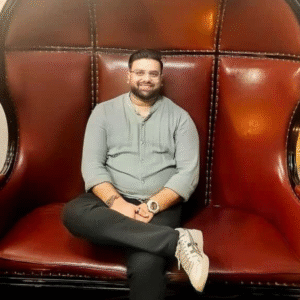Parenting is not about perfection, it’s about connection” – Dipika Savani

Parenting is not about perfection, it’s about connection” – Dipika Savani
In this conversation, we speak with Dipika Savani, a parenting expert and child psychologist, and founder of NurtureNest, talks about how a child’s brain works in the early years, why habits and emotions shape their future, and how parents can build stronger bonds with their kids.
Q: Dipika, people often say the first seven years of a child’s life are most important. Why is that?
Dipika : Yes, absolutely. In the first seven years, a child’s brain grows at the fastest pace. Neurons – the tiny cells in the brain that carry information – are making millions of new connections every second. This is the foundation stage. The habits, environment, and emotional security they get during these years create impressions in their subconscious mind that can last a lifetime. It’s like writing on wet clay – whatever goes in early, stays deep
Q: You mentioned the subconscious mind. How does it work in children?
Dipika: Children learn more through experiences than words. Their subconscious mind is like a sponge – it absorbs without judgment. For example, if a child repeatedly sees kindness, sharing, or discipline at home, it becomes part of their personality. Similarly, if they often hear anger or criticism, that also settles deep inside. Early habits, whether good or bad, become mental “programming” for their future behavior.
Q: Parents often complain that kids don’t listen, but they copy what we do. Why does that happen?
Dipika: That’s because of mirror neurons. These special brain cells make children imitate the actions, tone, and behavior of people around them. Kids don’t do what we say – they do what we do. If a parent shouts while telling the child to stay calm, the child learns shouting, not calmness. This is why being a role model is more powerful than giving instructions.
Q: And what about emotions? Why do kids cry, get angry, or throw tantrums?
Dipika: Children’s emotional brain is more active than their logical brain. They don’t always know how to express what they feel, so it comes out as crying, anger, or tantrums. For example, when they are tired, hungry, or overstimulated, they can’t explain it, so they burst out emotionally. It’s not misbehavior – it’s communication.
Q: So how should parents handle tantrums?
Dipika: By handling the emotions, not just the behavior. If we shout or punish, the child feels unsafe. Instead, acknowledge their feelings – “I see you are upset,” “I understand you are angry.” This gives them emotional vocabulary and teaches them self-regulation. Then gently guide them towards calmness. Connection first, correction later.
Q: How can we build emotional security in kids?
Dipika: Emotional security comes from consistent love, trust, and acceptance. When kids feel they are valued even in their worst moments, they grow confident. Listening patiently, being present, and validating their feelings creates a safe space. They need to know – “My parents are my safe home.”
Q: Finally, what role does bonding play? Things like hugs and touch?
Dipika: Science shows that bonding through physical touch – hugs, holding hands, cuddles – releases oxytocin, also called the “love hormone.” This calms a child, reduces stress, and builds trust. A simple hug can do more healing than a long lecture. Bonding is the foundation of discipline, learning, and emotional health.
Dipika’s closing thought: “Parenting is not about being perfect. It’s about being present. When we understand how our child’s brain and emotions work, we respond with empathy instead of anger. That’s how we raise secure, confident, and kind human beings.”






